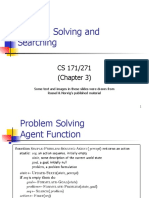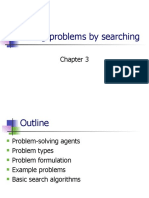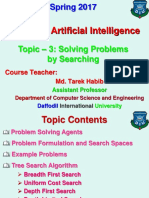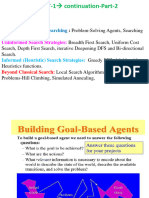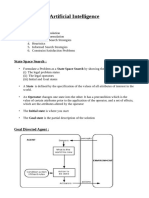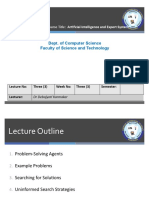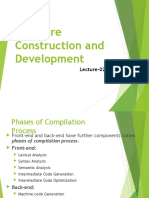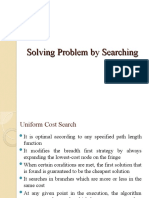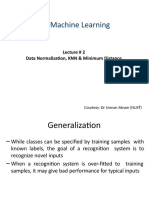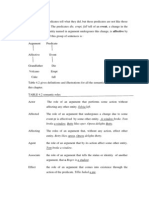0% found this document useful (0 votes)
54 views53 pagesSolving Problem by Searching
This document discusses problem solving using search algorithms. It begins by defining problems, search, and problem solving agents. It then covers goal formulation, problem formulation, search strategies including breadth-first search and depth-first search. Breadth-first search expands the shallowest nodes first and is complete but uses significant memory. Depth-first search expands the deepest nodes first and may get stuck on suboptimal paths. The document uses examples like the 8-puzzle and vacuum world to illustrate problem solving concepts.
Uploaded by
Iqra ImtiazCopyright
© © All Rights Reserved
We take content rights seriously. If you suspect this is your content, claim it here.
Available Formats
Download as PPT, PDF, TXT or read online on Scribd
0% found this document useful (0 votes)
54 views53 pagesSolving Problem by Searching
This document discusses problem solving using search algorithms. It begins by defining problems, search, and problem solving agents. It then covers goal formulation, problem formulation, search strategies including breadth-first search and depth-first search. Breadth-first search expands the shallowest nodes first and is complete but uses significant memory. Depth-first search expands the deepest nodes first and may get stuck on suboptimal paths. The document uses examples like the 8-puzzle and vacuum world to illustrate problem solving concepts.
Uploaded by
Iqra ImtiazCopyright
© © All Rights Reserved
We take content rights seriously. If you suspect this is your content, claim it here.
Available Formats
Download as PPT, PDF, TXT or read online on Scribd
/ 53








